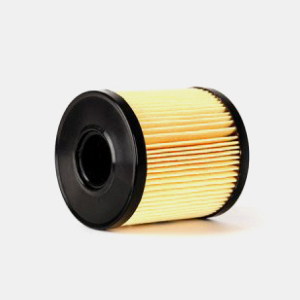-
 Afrikaans
Afrikaans -
 Albanian
Albanian -
 Amharic
Amharic -
 Arabic
Arabic -
 Armenian
Armenian -
 Azerbaijani
Azerbaijani -
 Basque
Basque -
 Belarusian
Belarusian -
 Bengali
Bengali -
 Bosnian
Bosnian -
 Bulgarian
Bulgarian -
 Catalan
Catalan -
 Cebuano
Cebuano -
 China
China -
 Corsican
Corsican -
 Croatian
Croatian -
 Czech
Czech -
 Danish
Danish -
 Dutch
Dutch -
 English
English -
 Esperanto
Esperanto -
 Estonian
Estonian -
 Finnish
Finnish -
 French
French -
 Frisian
Frisian -
 Galician
Galician -
 Georgian
Georgian -
 German
German -
 Greek
Greek -
 Gujarati
Gujarati -
 Haitian Creole
Haitian Creole -
 hausa
hausa -
 hawaiian
hawaiian -
 Hebrew
Hebrew -
 Hindi
Hindi -
 Miao
Miao -
 Hungarian
Hungarian -
 Icelandic
Icelandic -
 igbo
igbo -
 Indonesian
Indonesian -
 irish
irish -
 Italian
Italian -
 Japanese
Japanese -
 Javanese
Javanese -
 Kannada
Kannada -
 kazakh
kazakh -
 Khmer
Khmer -
 Rwandese
Rwandese -
 Korean
Korean -
 Kurdish
Kurdish -
 Kyrgyz
Kyrgyz -
 Lao
Lao -
 Latin
Latin -
 Latvian
Latvian -
 Lithuanian
Lithuanian -
 Luxembourgish
Luxembourgish -
 Macedonian
Macedonian -
 Malgashi
Malgashi -
 Malay
Malay -
 Malayalam
Malayalam -
 Maltese
Maltese -
 Maori
Maori -
 Marathi
Marathi -
 Mongolian
Mongolian -
 Myanmar
Myanmar -
 Nepali
Nepali -
 Norwegian
Norwegian -
 Norwegian
Norwegian -
 Occitan
Occitan -
 Pashto
Pashto -
 Persian
Persian -
 Polish
Polish -
 Portuguese
Portuguese -
 Punjabi
Punjabi -
 Romanian
Romanian -
 Russian
Russian -
 Samoan
Samoan -
 Scottish Gaelic
Scottish Gaelic -
 Serbian
Serbian -
 Sesotho
Sesotho -
 Shona
Shona -
 Sindhi
Sindhi -
 Sinhala
Sinhala -
 Slovak
Slovak -
 Slovenian
Slovenian -
 Somali
Somali -
 Spanish
Spanish -
 Sundanese
Sundanese -
 Swahili
Swahili -
 Swedish
Swedish -
 Tagalog
Tagalog -
 Tajik
Tajik -
 Tamil
Tamil -
 Tatar
Tatar -
 Telugu
Telugu -
 Thai
Thai -
 Turkish
Turkish -
 Turkmen
Turkmen -
 Ukrainian
Ukrainian -
 Urdu
Urdu -
 Uighur
Uighur -
 Uzbek
Uzbek -
 Vietnamese
Vietnamese -
 Welsh
Welsh -
 Bantu
Bantu -
 Yiddish
Yiddish -
 Yoruba
Yoruba -
 Zulu
Zulu
Effective Solutions for Protecting Crops with Bird Prevention Netting Techniques and Strategies
The Importance of Bird Prevention Netting in Agriculture and Urban Spaces
Birds are an integral part of our ecosystem, contributing to pollination, pest control, and the overall balance of wildlife. However, when it comes to agricultural practices and urban environments, birds can sometimes become pests. They may nibble on crops, raid gardens, or nest in unsuitable places, causing substantial damage and disruption. To address these challenges, bird prevention netting has emerged as an effective solution for farmers and city planners alike.
Bird prevention netting is a lightweight, durable mesh material designed to keep birds away from specific areas. It serves as a physical barrier, preventing birds from accessing crops, orchards, or urban structures. Such netting is available in various sizes and materials, allowing customization for different applications. The effectiveness of this preventative measure lies in its versatility and ease of installation, making it a go-to option for many.
In agriculture, one of the most significant impacts of bird activity is the damage they inflict on fruit and grain crops. For instance, vineyards and berry farms are routinely targeted by birds, which can lead to significant financial losses for farmers. By deploying bird netting over vulnerable crops, farmers can safeguard their harvests without resorting to harmful pesticides or inhumane methods of bird control. This netting allows sunlight and rain to reach the crops while effectively keeping birds at bay, promoting a more organic and sustainable agricultural practice.
bird prevention netting

Moreover, in urban settings, bird prevention netting plays a crucial role in managing populations of pest birds such as pigeons and sparrows. These birds can create unsightly messes and potentially harmful situations in public spaces, parks, and building facades. Installations of netting in these areas can deter birds from nesting on ledges and balconies, helping to maintain cleanliness and hygiene in urban environments. This not only enhances the aesthetics of the city but also reduces the need for costly clean-up services.
Apart from its functional benefits, bird prevention netting is also an environmentally friendly solution. Unlike chemical repellents or traps, which may pose risks to wildlife and the environment, netting provides a humane method of control. It protects not just the crops and human structures but also the birds themselves, ensuring they remain safe and unharmed. Furthermore, many netting products are made from recycled materials, further reducing their ecological footprint.
Despite its advantages, there are some considerations to keep in mind when using bird prevention netting. Proper installation is crucial, as improperly applied netting can potentially trap birds rather than deter them. It’s essential to create a barrier that allows for air circulation and doesn’t entangle wildlife. Regular maintenance and inspections also help ensure the long-term effectiveness of the netting and contribute to the well-being of local bird populations.
In conclusion, bird prevention netting is a vital tool in both agricultural and urban management contexts. It strikes a balance between protecting crops and enhancing urban environments while remaining environmentally conscious. With proper implementation and maintenance, bird netting can significantly reduce potential damage caused by birds, promoting healthier ecosystems for all. As we continue to face challenges posed by wildlife interactions, embracing innovative solutions like bird prevention netting will be essential for sustainable coexistence.
-
Shipping Plastic Bags for Every NeedNewsJul.24,2025
-
Safety Netting: Your Shield in ConstructionNewsJul.24,2025
-
Plastic Mesh Netting for Everyday UseNewsJul.24,2025
-
Nylon Netting for Every UseNewsJul.24,2025
-
Mesh Breeder Box for Fish TanksNewsJul.24,2025
-
Expanded Steel Mesh Offers Durable VersatilityNewsJul.24,2025











